#haseki nurbanu sultan
Text
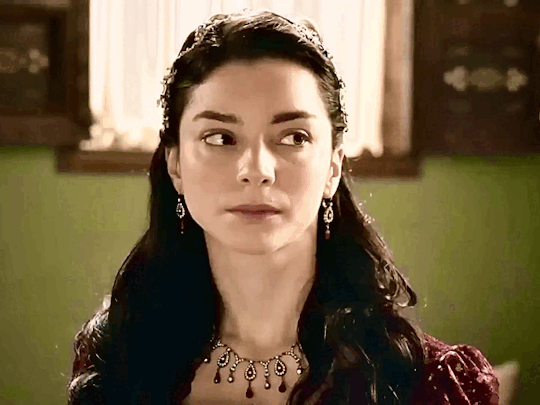
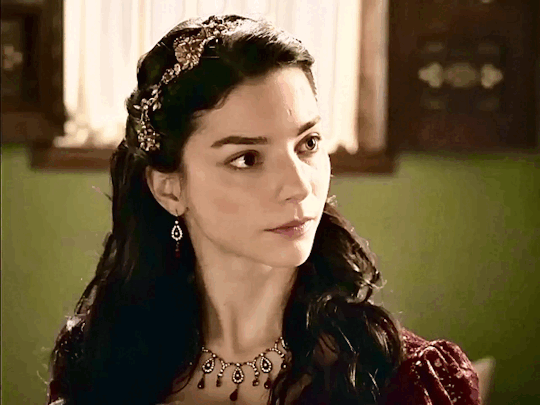


✮ Afife Nurbanu Sultan (Merve Boluğur) — Magnificent Century
33 notes
·
View notes
Text


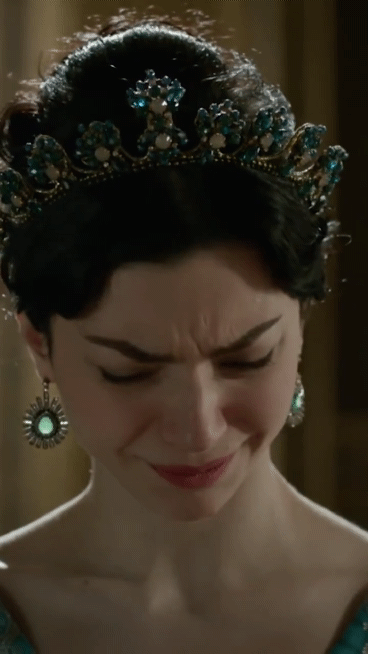

#history#magnificent century#muhteşem yüzyıl#ottoman#sultanas#ottoman sultanas#ottoman history#ottoman valide#valide sultan#nurbanu gifs#haseki nurbanu sultan#nurbanu#nurbanu sultana#nurbanu sultan
32 notes
·
View notes
Text
Mistakes in the Magnificent Century part III
(title, ranks and traditions)
Some facts might be the same or very similar to the ones in previous parts,but they will be discussed from different angle.
1. Valide Sultan title
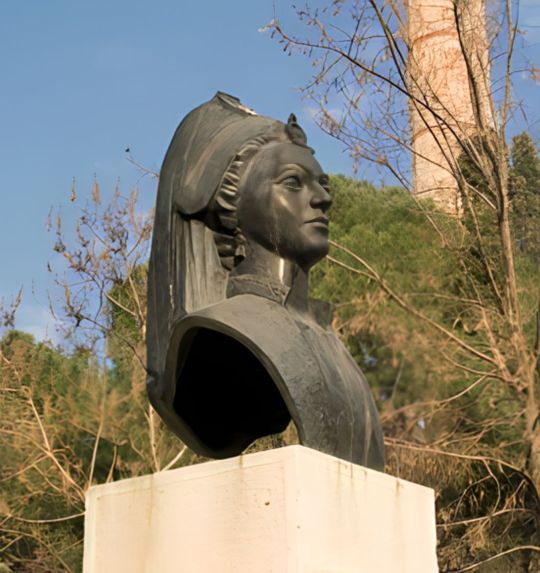
As I have spoken in the previous chapters, pre 1520 mothers of sultans were not sultans at all, they were titles as hatuns, though treated with utmost respect. In 1520 as Suleiman the Magnificent ascended the throne, he bestowed the title of Sultan to her mother Ayşe Hafsa, thus making her the first person in the ottoman history to become sultan from slavery. However, for Ayşe Hafsa being Sultan was not the same as the Valide Sultan that we know today. She was sultan yes, and she was the mother, so "Valide" was the proper address,from her children, as it was for every mother in the Ottoman empire, she was registered as "the mother of Sultan Suleiman", therefore in some sense, we can say she was not "Valide Sultan".
The first person,who actually made the "Valide sultan" a thing and officially registered herself was Nurbanu. So, the first Valide sultan with its full meaning was not Hafsa,but Nurbanu, who was registered as Valide Afife Nurbanu Sultan.
2. Haseki Sultan and Hürrem's marriage.
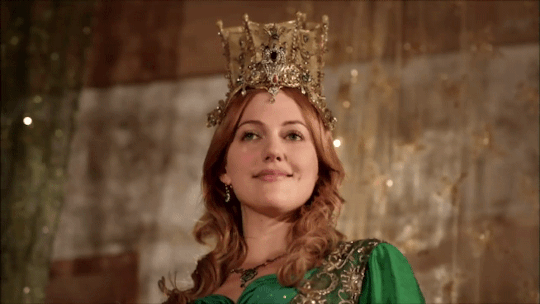
There were more than just several miscon- ceptions about the subject in the show.
First and foremost it was created specifically for Hürrem,so neither Hafsa nor Mahidevran have ever had the title. It also brought another mistake about Hafsa,that I will explain below,but now I will just make clearer how, when and why the status was created.
It was almost definitely created in mid-1534 after the death of Ayşe Hafsa Sultan and was probably legalised by their marriage, which by some sources is mentioned to be in 1533. If this is right, then it would mean, Suleiman married Hürrem before he gave her the status of Haseki and the marriage only freed her,but the most common and for me the most logical version is that after the death of Hafsa Sultan, Suleiman married her and gave her the title.
The death of Hafsa Sultan is a crucial part in the story, nor because she had some kind of objection towards Hürrem or her promotion,but the legal status of Hürrem reached its peak of necessity after her death. As we know, Ayşe Hafsa was a trusted ally and Confidant of uprising Sultan, even during his time as shehzade, so during the campaigns, his mother was the supervisor of the capital and his family, so the sultan could go to war without worrying about what he was leaving behind. However, after Hafsa's death things changed, Süleiman lost beloved mother and most trustworthy person around him, he needed to act immediately,as the campaign was near. He needed someone,whom he could entrust Harem, Family and the capital. His children were little, Sisters(whom by the way he trusted very much) were all married and Hürrem did not have a proper rank. It is said that he also discussed the candidate of high ranking harem servants, one and most promoted one of whom, in my opinion, would have been Gulfem, but he finally found the best possible solution that would affect his empire for centuries. He married Hürrem, gave her the rank of Haseki Sultan and left her in charge of the Harem, Family and the empire.
Hürrem became the first Haseki sultan in history.
Misusage of the title did not and here and there, not only the status and function,but even relevance of achievement was changed here. In the very first episode, Nigar kalfa made it clear that giving birth to a son, was enough to achieve it however, originally only the chosen ones could become Hasekis until its relevance faded during Murad's reign and completely lost exclusivity during Ibrahim's.
Essentially, the original function of haseki sultan was filling the absence of Valide, therefore only Hürrem and Nurbanu can be considered as the "original Haseki Sultans". Later many women were given the status, however the show made it wrong. Mahidevran,Mahfiruz and Halime never held it, however Şevikar, referred as Şevikar hatun in the show, was actually Haseki Şevikar sultan, the fifth Haseki of Ibrahim, three of whom, Ayşe, Mahinerv and Saçbağli, were left out, which is kind of understandable, because they had no importance in plot, unlike Turhan, never became Valide,unlike Saliha Dilaşub and Muazzez and had no influence on Ibrahim,Unlike Şevikar and Humaşah.
Their social standing is also misportrayed in the show, where Haseki ranks below and bows to imperial princesses, while in real life it was the other way around.
3. Daughters of Ottoman Princesses

In the show, we met three daughters of the ottoman princesses: Esmahan,Huriçihan and Humaşah. They are referred to as Sultans,but in real life the daughters of imperial princesses were not called so,instead they had the title Hanimsultan and ranked even below the imperial consorts. The only exception to that was Humaşah, the daughter of Mihrimah Sultan, who received the title and prestige of the Sultan.
4. Harem Kalfa

In the show, they are just giving people the rank left and right. Nigar was already a high ranking, trusted servant of harem,but it turned out that she had only been there for 6 years. Fidan hatun was banished for attacking Sultan,but after a while she returned and became Kalfa, in Kösem melek hatun received rank out of the blue etc.
In real life, however, becoming kalfa was a long process. As we know,there were hundreds or even thousands of girls in the harem,but only a handful of them would become favourites,but what would happen to others? After ten years of being a harem resident some of them would have been transferred from harem and soon married off, some could by freedom, while others, usually the smartest and most responsible ones,would go to a special school that lasted two years, they would revive extensive training, both intellectual and physical, after that they could return in harem as teachers and overseers and if they were good enough they could promote.
There was actually quite a complicated hierarchy of harem servants,not only there were Kalfa's who had duty to supervise certain works like food or laundry(later even coffee),but there were administrative ranks, that they could achieve:
Mistress chief treasurer(Baş Hazinedar usta): she was head of the harem treasury.
Treasurers(Hazinedars): there were other hazinedars as well, who worked in harem treasury. Baş hazinedar usta was their direct superior.
Imperial Kalfa(Hünkar Kalfası): Personal kalfa of the padişah.
Lady stewardess(Kahya kadin/Kethüda Hatun): she ranked below imperial consorts,but her role raised during sultanate of women, when Gülfem and Çanfeda held the office, they were right hand women of Chief Harem managers(Hürrem and Nurbanu) therefore second in command of the Harem.
Senior Kalfa(Büyük Kalfa): Head of Kalfas, she was responsible for literally everything that was happening in the harem, sultans and şehzades treated her with respect and called "my kalfa" or "your grace"
Lady secretary: secretary of administrative organs of harem.
Junior kalfa( Küçük Kalfa): Senior kalfa was their direct superior. They had ranks within( second- ranking, third ranking, novice etc.) They were sometimes teachers and daily overseers.
Çanfeda for example entered the harem with Nurbanu, so in late 1530's or early 1540's. Nurbanu became favourite and went to Manisa, while Çanfeda remained in the old palace, in 1566 she was already a high ranking kalfa in the old palace, when Nurbanu called her. That would mean she was sent to train as kalfa in late 1540's or yearly 1550's, therefore she would have a decade or two to raise in ranks.
5. Princely harem.

In the magnificent century, prince usually gets his harem, whole in Topkapi palace, which is the lie through and through. They went even further and made up with the rule that the prince can not have a child with their concubine until they get their province to rule. Why would they be allowed to have concubines,but not having a child, when contraception is still unreliable.
Actually, their case was far more easier, princes would revive their sanjaks while still very young, their mothers, governesses and close servants would carefully choose their harem and leave the palace with their mother and full sisters. That also brought another mistake in the show. In the flashbacks, we can see Ayşe Hafsa and Hatice visiting Suleiman in Manisa, however Ayşe Hafsa along with Fatma and beyhan left for Manisa with Suleiman in 1512, while Hatice,being 4 years older than Suleiman, got married the same year.
6. Regency
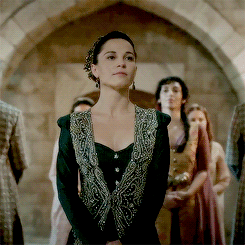
They introduced Kösem's regency as something unheard of,while completely neglecting Handan and Halime.
Handan was the first woman ever to rule as regents in her son's stead. She appointed viziers, discussed political matters and built a trusted circle for her son.
Halime was not officially registered regent but due to the insanity of her son, paşas asked her to rule the state after the rebellion she herself organized.
Kösem's and Turhan's regency is well known, so I will not speak about it.
7. Kösem's wedding

Not exactly the mistake as it is not proven, but as the event is highly unlike, I'll just put it there.
In 1609 it is said that Ahmed had four children with two women,but neither of them were married to him. In the two latters, one form 1612 and other from 1616, the 1612 letter straight out mentions her as sultan's concubine, who he loves the most and in 1616 she is mentioned as juts Haseki,but nothing is said about the marriage( I am not adamant about him not marrying her,I am just saying that it's unlikely, however I admitt she might indeed was concubine in 1612 and after the death of Mahfiruz, Ahmed married her and raised her stipend),however early in Kösem's regency vencians questioned ottoman practice, that mother of sultan was honoured and even given the regency,despite not being married to his father. As we know in Venice and generaly in Europe, source of power for woman was her marriage and not just motherhood. That is a time, when it was "unrevealed" that ahemd married her before he died,(if that latter is to be believed than Kösem and Ahmed did not marry in 1613), now it was actually thought that it was false information used by Kösem to strengthen her position in the eye of Venice as they needed friendly relation with them. That is not widely accepted,but it can be strengthened by the fact that Vencians still did not believe it, so perhaps they knew for sure that it was lie?
8. The death of Halime sultan and Mustafa.

In the show Halime, like many others, is victim of making Kösem seem more powerful, while Mustafa was killed by Murad. In real life, Mustafa died of natural causes, probably because of epilepsy in 1539, he was buried in Hagia Sophia and the coffin was placed in a mosque built for him. Halime is buried next to him and no permission of reburial was asked or granted, therefore Halime was not killed by Kösem, she went to the old palace and lived a long life.
9. 1517-1540
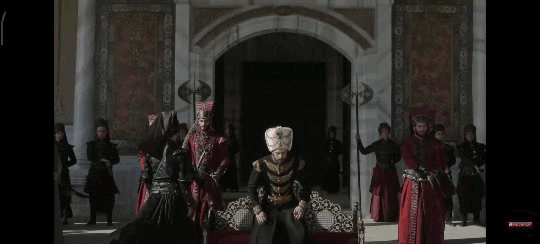
I'll be honest, I don't remember much of those episodes, they were boring and monotonous for me, but what I remember is one part from Kösem's iconic " The state you are talking about is mine" speech. She mentioned that she took over the reins of the state from Ahmed 15 years before the event, well that is a huge lie. Though the show runners tried to make Kösem all powerful, the invincible mastermind behind every single breath people drew in the empire,but she was actually quite powerless from time to time and the period between 1617 and 1623 is one of such. She was still young and inexperienced that time and main powerhouses in the empire were Halime and Osman's faction and she was not the leading force during any of the rebellions, she was allie of Halime, who, according to many historians, had major influence that time and the great impact on Kösem. Some even go as far as claiming that she persuaded Osman to kill Mehmed, so Kösem would take her side.
In short, Kösem did not have reins of sultanate for 15 years,but only about 10.
As I said, I don't remember much about the episodes, but from what I remember, Kösem had something to do with Murad's death. I'll be short on this: that's a lie.
10. Coup of 1648

The show made Kösem something of a filicidal tyrant. However, In real life her tyrannical tendencies appeared only after the death of Ibrahim, which he had nothing to do with. The ones behind the incident were Turhan and her faction. Kösem indeed took part in the Ibrahim's dethronement for the good of everyone,but mainly because she had seen the mad sultan dethroned,but lived. Mustafa had a similar situation,he was dethroned and locked in kafe, while his mother was sent to the old palace, which Kösem was absolutely willing to do. However, Turhan made her move and had Ibrahim executed to get rid of opposition for good, or perhaps because of the old resentment. Things did not go exactly as she had planned though, Kösem became regent and visibly started to avenge Ibrahim's death, it became clear that she was not going to hand over any power to Turhan and after she started to oppose even went as far as attempted dethronement of Mehmed(however she was not going to kill him.)
Therefore the child killing monster the show made her become is straight out a lie. One of her sons died of natural causes and the other was killed by outer forces, that she tried to avenge.
#history#historical drama#16th century#magnificent century#magnificent century kosem#mc: kosem#ottoman empire#ottomanladies#historical events#historical figures#sultanate of women#haseki hurrem sultan#hurrem sultan#nurbanu sultan#kosem sultan#safiye sultan#muhtesem yuzil kosem#historyedit#historical#ottoman sultanas#ottoman history#ottoman#mistakes in the magnificent century
147 notes
·
View notes
Text





"Of the several ways in which Nurbanu's career broke tradition, her burial in the tomb of Selim II had perhaps the greatest symbolic import. [...] By linking his mother with his father in this manner, Murad emphasized his mother's place within the dynastic family and suggested that his legitimacy was derived from her as well as from his father." —The Imperial Harem, by Leslie Peirce
#magnificent century#ottoman history#nurbanu sultan#selim ii#murad iii#my caps#okay but seriously#Selim loved his son so much#that contemporaries were baffled#like he totally defied the expectations of the time to be a family man#I also view this move on his part as a true sign of just how much he loved nurbanu#since unlike with his father#there wasn't any motivating factor for him to marry his haseki#it really seems like he just did it because he wanted to esteem her as his partner
15 notes
·
View notes
Photo

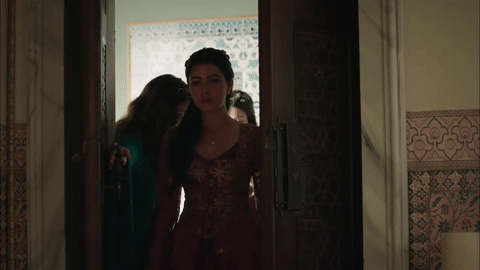

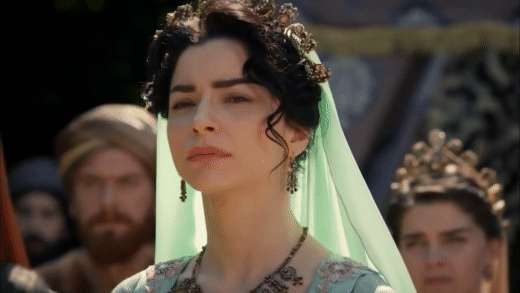






These historical women from Magnificent Century are still giving me bi panic:
1. Perlin Karahan as Mihrimah Sultan
2. Ecem Çalık as Esmahan Baharnaz Sultan
3. Meryem Uzerli as Hurrem Sultan
4. Mevre Bolugur as Nurbanu Sultan
5. Nur Fettahoglu as Mahidevran Sultan
6. Deniz Cakir as Sah Sultan
7. Selen Öztürk as Gulfem Hatun
8. Gözde Türker as Safiye Sultan
9. Nebahat Cehre as Ayse Hafsa Sultan
10. Selma Ergec as Hatice Sultan
#perlin karahan#Mihrimah Sultan#meryem uzerli#hurrem sultan#haseki hurrem sultan#mevre bolugur#Nurbanu Sultan#afife nurbanu sultan#nur fettahoğlu#Mahidevran Sultan#deniz cakir#sah sultan#sah huban sultan#selma ergeç#hatice sultan#Nebahat Çehre#ayse hafsa sultan#hafsa sultan#esmahan baharnaz sultan#esmahan sultan#safiye sultan#gulfem hatun#Gozde turker#Selen Öztürk#ecem Çalık#magnificent century#muhteşem yüzyıl#bi panic#pretty women#pretty girls
93 notes
·
View notes
Text
Historical Ottoman Dynasty Drama/Ottoman Dynasty Historical Haseki Sultans (2/11)




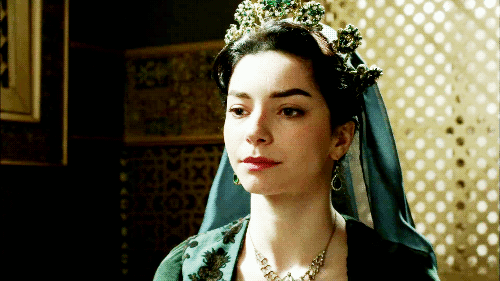
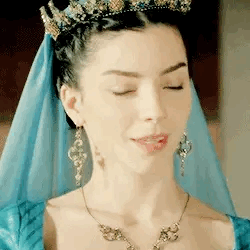
Nurbanu Sultan (c. 1525– 7 December 1583)
#nurbanu sultan#muhtesem yuzyil#magnificent century#historical ottoman dynasty drama/ottoman dynasty historical haseki sultans
9 notes
·
View notes
Text


“At first glance, she [Gülnüş] seems to be completely adverse to any affair but in reality with her arts, deceptions and flatteries with which she bends the Gran Signore’s will, she has a large share in deliberations and graces. From this stems the most pungent jealousy of the Queen Mother, now 60 years old, who, having governed the empire with despotic power during her son's minority, bitterly resents seeing the other being preferred in esteem and confidence.”
"With great pride, she shows respect and devotion to the Queen mother-in-law, she pretends to be adverse to any affair; at the same time she uses all the arts, her intellect and flatteries, not only to have a share in deliberations but to keep herself alone in command with the Sovereign.” — Giovanni Morosini di Alvise (1680)
#magnificent century#haseki hurrem sultan#hürrem sultan#mcedit#sultanas#muhteşem yüzyıl#hurrem sultan#nurbanu sultan#kosem sultan#rabia gulnus#ottoman empire#ottoman history#nurbanu#turhan sultan
60 notes
·
View notes
Text

She's a queen.
Her soul is Royalty
#nurbanu#sultan#ottoman history#ottoman empire#haseki hurrem sultan#valide sultan#valide nurbanu sultan#nurbanu sultan#red dress#royal
32 notes
·
View notes
Text



Muhteşem Yüzyıl — 110. Bölüm
Haseki Afife Nurbanu Sultan
64 notes
·
View notes
Text




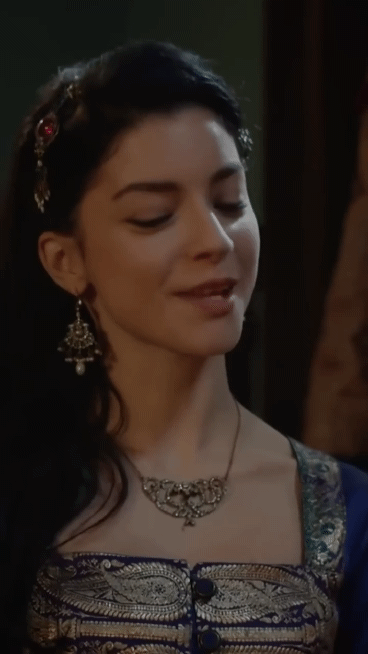


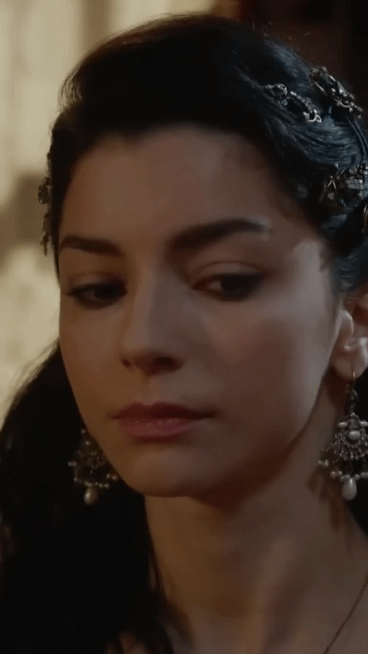

#history#magnificent century#muhteşem yüzyıl#ottoman#sultanas#ottoman sultanas#ottoman history#ottoman valide#valide sultan#nurbanu gifs#haseki nurbanu sultan#nurbanu#nurbanu sultana#nurbanu sultan
30 notes
·
View notes
Text
Power and status of ottoman princess
Title and honorifics
Before the rule of sultan Bayazid II every high ranking woman were called Hatuns,including mother,sisters,aunts and daughters, however thier social standing was naturally higher than non imperial women. The way to adrress them was Hatun that was used after their given name,for example, Gevherhan hatun,daughter of Mehmed the coqueror or effendi that would have similar meaning as mistress.
After accession of Bayazid II his daughters and granddaughters were given title of sultan,however non of his living sisters or aunts got the honor. Later on proper way to adress them woulf become “Sultanim”, which would mean “my sultan”,or again “effendim” by other members of imperial family. I would like to underline that contrary to what wikipedia states, there is no records that I know,where princesses where called with “Devletlu İsmetlu” like Valide sultan and Haseki sultan were.
The term “sultana” that was made more feminine by Europeans never existed in ottoman language.
Family, Marrige and Issues
I want to start discussing their family with brothers,it’s widely known fact that before suleyman there was “once concubine,one son” tradition therefore if shehzade/Sultan had full-sisters they were all older,that is one way to deduce if princess of unspecified mother was full sister of half sister of reigning sultan. Naturally Shezades had closer relationship to their full sisters as they were leaving with him and their mother,when he was appointed as governor of princely province. Their latter life would be spent in their brother’s harem before marriage.
being half sister of sultan did not automatically mean that their relationship would have been stained,however mostly,princess would favour full-brother over half,but were treated by same respect regardless who ascended the throne. It was different case when imperial princess had no full brother at all,for example Sah Huban, she had very close relationship with Suleyman,even closer than his deeply respected full sisters.
Their marriages,much like any other princesses of any country, was political,arranged by their parents to strengthen standing of their father or brother,for example daughters of Selim I were firstly married to powerful politicians,so their father would have supporters in his rebellion,while their second marriages were arranged to help Suleyman in his early reign. Their husbands were usually much older than them, therefore marital life was likely not consensual and in no way their choice. For example,Rustem paha,husband of Mihrimah,was same age as Hurrem,her daughter’s fate was even worse as she had to marry peer of her own grandfather,however given the fact that they had 8 children,marriage can be considered successful. After the Marriage princesses were getting their own little “Harrem”,where they had great rooms for themselves and their servants,where even their Husbands needed permission to enter and even refuse to have sexual intercourse with them,sometimes their marriage could end unconsumated and after some time princess could use another of their privilege-divorce. Reason of divorce could have been different: Personal attitude,mistreatment,political move or adultery. It was made clear,especially by Suleyman,that imperial princesses were full-fledged members of imperial family so they ranked higher than their husbands,therefore having relationship with other women was their humiliation,which would lead to divorce, after which they would retire in old palace and could refuse to remarry again.
Only their first degree descendants would be given imperial titles.
Daughters- Hanimsultan(with Ayse Humashah as exception)
Sons-Sultanzades. They ranked even below non-sultan imperial consorts and some of the highest ranking harem servants.
Hierarchy and Power
They actually had equal standing in ottoman hierarchy. As female members of dynasty they had the same status and privileges,were reffered as sultans and often received relative stipend.( Which was on average 200 akche a day, for comparison, Valide sultan had around 2000-3000 depended on time period, Haseki sultan 1000-1100(Hurrem as only exception,who got stipend of Valide sultan ) Gulfem,who was almost regarded as member of family herself was recieving 150, Nurbanu’s trusted friend and one of the highest ranking non-sultan woman ever Canfeda received 200, Mahidevran only received 40 and avarage stipend of cariye was 2-4) Besides, sisters of sultans were technically daughters of sultan, though the deceased one, still they were treated with great respect much like their late father. However, birth order was important thing in ottoman society so younger sister respected older and bowed to them as well as nieces bowing to aunts regardles of their martial or fianacal status. Therefore saughters of sultan,as nieces, were calling sisters of sultan,as aunts, “effendi" out of respect.
In conclusion, even if they had same social standing, sisters of sultan were still bit ahead daughters of sultan formally.
However, Granddaughters, Nieces and cousins of sultan,despite the same rank, were less prestigious.
Despite their relative social status and order of birth their actual power was dependent on several factors:
1. Their relationship with Padishah,Valide sultan or Haseki sultan. They had higher rank and much more evident political power, they still needed their permissions about major decisions,even if it were their right, so being on good terms with them was a good move. Half-sisters naturally were not as favoured as full-sisters by Valide sultan,but with padisah had more options, they could have been supportive, religious, charitable and obedient another way was sending beautiful, well-educated concubines,who could have become Haseki(after 1533), that is when their good relationship begun,most of Sultanate of women memebers were raised at their court and remained in favour after they became Valide Sultans, in that case even some of the Padisah’s expressed gratitude and gratefulness for raising their mother, (such occasion was Ahmed I’s attitude towards her aunt which I will discuss below.), they could also donate money to wars, harem managements and charitable projects, either all their own or assist Haseki sultan.
2. The second way to gain power was wealth. Money opens many doors and it was like that in the past. They could establish some business or even receive bribes.
3. They could also gain power with marriages, it was not only beneficial for their brothers,but for them as well. If their husband had a high rank, they could keep an eye on the political situation and act accordingly, they would use that influence to assist their brothers, who,In turn, would be extremely grateful for their support.
Comparison between Ottoman and European princess
Status- Status of European princesses depended on their marriage. Being princes was not guaranteed power,but only a formal status. For example, Margaret Tudor was below prince Henry in rank but when she married by proxy to Scottish king, she outranked him and demonstrated that by walking in front of him. On the other hand, another sister Mary married to Charles Brandon and was Duchess of Suffolk ever since,while Status of Imperial princess remained the same.
Opportunity- European princesses could have become Queen consort and Queen mother and veiled immense power, while imperial princesses could never become Haseki or Valide.
Marriage- Ottoman princesses were usually older when married and outranked their husbands,while European princesses were always below their husbands. Sultan could also refuse remarryin,while European princesses had no such right
Freedom-European princesses were less limited by social customs.
Consummation-Ottoman princesses had the right to refuse Consummation without a deadline, while European princesses had to Consummate marriage even if they were twelve, unless of course parents arranged it other way.
Divorce - it was right of ottoman princesses to divorce their husbands,while for European princesses it was a rare privilege.
Despite so many differences, one thing was same- they had a loveless purely political match .
Powerful ottoman princesses
Here I Rank ottoman princesses,who had considerable power and influence, sorted by date of birth.
P.S gifs are from MC and MC:K,but some characters might represent different historical figures.

Fatma sultan
Fatma may have been the second child of Ayşe Hafsa and Selim I . She was born in Trabzon around 1492 and spent her childhood there. When her younger brother Süleyman received his own princely province in 1509, she probably accomponied him to Caffa with their mother.
She was married in 1516 for the first time,but it soon ended in divorce and Fatma returned to Manisa. She gained considerable influence as she was most likely the sister,who was recorded to be in Manisa, helping mother manage harem and protect Suleyman from their father. If legends are true and Selim was indeed trying to kill Suleyman,that she had hands in saving him. Most likely, Fatma and her mother were instructing young sukeyman,how not to deserve the wrath of father and covering his mistakes. After Suleyman ascended the throne, she was married again to Kara Ahmed pasha in 1522. Marriage lasted long,but did not produce any child, so either fatma was infertile (Kara Ahmed pasha had two daughters that are disputed to be fatmas,but they were likely from previous marriage) or the match was not happy and Fatma refused sexual intercourse, however considering her reaction to his death, it was most likely the former.
According to what we have Fatma seems to be quite free spirited as depicted in the series. She was wealthy, cunning and might have been fond of parties. She had hands in financing some of her brother’s campaigns and even won the favour of janissrries. However, in 1555 Kara Ahmed pasha was executed by the efforts of Mihrimah and Hurrem and Fatma was married to eunuch and banished from the capital for hed intrigues against them She died either in 1557 or 1573.

Sah huban sultan
Daughter of Selim I and unknown concubine, born in 1500. As she has no full brothers, she was very close to Suleyman and their father, with whom she spent most of her childhood. Considering Suleyman’s great respect for her, Sah was likely a supporter of him and helped to deal with Selim I.
She was married in 1523 to well-educated and intelligent Lutfi pasha with whom she shared religious thoughts and beliefs. Marriage, however did not seem to be successful the couple only had one daughter and Sah refused to have a sexual relationship ever since. She was very pious, intelligent,outspoken and fierce in nature. In the only description of her daughter Esmahan Burnaz, it is said that she was arrogant and demanding and it was Shah’s domineering attitude in the family that was blamed for it, as by this “she had ruined the role of woman” in the child’s mind. However,that was recorded by the European ambassador only, who had never met any of them and probably heard some rumors or made it up after an ugly end of their marriage.
In 1541, Lutfi pasha punished a prostitute for adultery by mutilating her genitals.Şah could not tolerate the humiliation and mutilation of a woman without a word, which is why she got into an argument with her husband, who hit her . Şah had Lutfi pasha beaten up and immediately asked his brother to allow the divorce. Süleyman then exiled him. Şah remained with her brother in Istanbul for the rest of her life and supported the wife of Süleyman, Hürrem, in carrying out her construction projects. She lived a modest life in the Old Palace and devoted all her time to charity and religion. Shah had excellent relationship with Hurrem and Mihrimah and in my opinion, close bond between aunt and niece helped young sultan to shape her mind and characteristics.
She died in 1572 and was buried in her father’s complex.

Mihrimah Sultan(1522-1576)
Her life is very much known. She was the most powerful imperial princess in the empire, so I will just list some of her achievements:
1. Her stipend was 600 akches a day during the reign of three different Sultans. it was three times as much as regular pirncess
2. She had correspondence with Catherine de Medici and other foreigner diplomats, who would often send her gifts to help them in some political affairs.
3. She financed some of Suleyman’s campaigns all her own
4. She built a whole fleet of 400 ships.
5. She had three palaces and two mosques
6. She served as sole de facto Valide from 1558 to 1566 and shared it with Nurbanu from 1566 to 1574.
7. After the death of Bayazid Mihrimah banned everyone from laughing and sent back clothes to Suleyman and Selim who were secretly planning a grandiose wedding, that was cancelled by Mihrimah and instead a very plain ceremony was held.
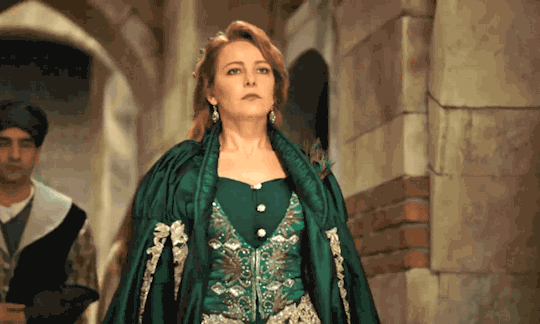
Humasah 1543-c.1582 or later
She was a posthanous daughter of Shehzade Mehmed and despite being only a daughter of prince, she was given the same privileges,but greater power, as any other sultans. She was one of two favourite grandchildren of Hurrem and Suleyman. She married three times,but the source of her power was a good relationship with Sultans. She was the one who raised Safiye and gifted her to Murad, so her power reached it’s peak during his reign.
She financed many construction projects,but was buried in a mosque that was built by Hurrem and Suleyman for her father.

Ayse Humasah 1543-1594.
Daughter of Mihrimah sultan and Rustem pasha, she was practically the same as her cousin with whom she shared many things started from date of birth and ended with their name. Ayse Humasah was the only woman born to an ottoman princess,who was herself addressed as sultan and her children were considered members of the dynasty. She was married two times and her influence was extremely great during the reign of three Sultans. Her power reached it’s peak, when her husband was appointed a grand Vizier and she had hands in very major political decision.

Gevherhan Sultan. 1544-after 1526.
Eldest child of Nurbanu and Selim. She was married to Piyale Pasha, an admiral who died in 1578 and she was remarried in 1579. She was one who raised Handan and gifted it to the prince, for which not only Handan was grateful, but her son Ahmed as well, who after his accession gifted very expensive furs to Handan, Gevherhan and Safiye. The second gifts were given to Handan and Gevherhan only,which indicates that unlike Safiye,she never fell from his favour. Peak of her power was from 1598 during her husband’s grand vazirate. She did a lot of charity in her life.
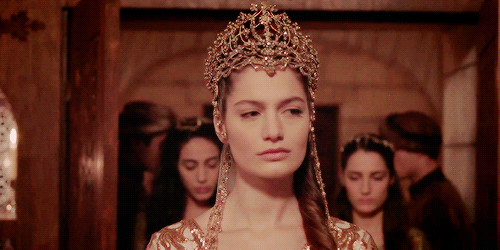
Ismahan sultan 1545-1585
Daughter of Selim and Nurbanu,she was married to Sokollu Mehmed Pasha and Through her husband and her own rank, Esmehan was the most influential sultana of the empire for years. In wealth, only her aunt, Mihrimah, could overtake her, but in influence, almost no one could. She constructed several projects and had foreign diplomatic affairs, most notable her correspondence with Catherine de Medici. She had a very artistic and dramatic personality, often throwing parties and shows. She was recorded to be very much alike Hurrem,both of them were short, not conventionally beautiful,but very intelligent. She was heavily involving herself in politics with her mother.
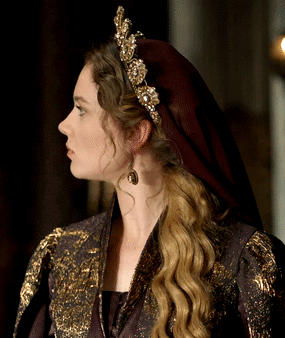
Burnaz Atike Sultan
Sultan Atike was born in 1614 or 1615 and although some sources consider her to be the daughter of Kösem, she was certainly not her child. That can be supported by the fact that she supported Turhan’s rebellion and had a good relationship even after kosem was killed. She was one who raised Turhan and remained in friendly terms for both Turhan’s gratitude and their shared politican views. Atike was noted to love children very much,but had none on her own, so she was involved in raising her nephew,who regarded her as second mother and listened to every of her advice.
She died around 1570.
I hope you liked it, I think it’s unfair to only talk about Mihrimah,while there were so many powerful and intelligent Princesses. I did not talk about Esma sultan as she was in later centuries and I am not fond of her times.
Which ottoman princesses are you favourites?
If i accedentaly missed something out you can ask it in comments
#historical drama#period drama#history#sultanas#valide sultan#medieval women#nurbanu sultan#hurrem sultan#mihrimah sultan#safiye sultan#kosem sultan#turhan sultan#magnificent century#magnificent century kosem#mc: kosem#sultanate of women#sultan suleyman#haseki hurrem sultan#ottoman history#ottomanladies#ottoman empire#15th century#16th century#17th century
109 notes
·
View notes
Note
1, 12, 25, 13 for MC?
1. the character everyone gets wrong
Oh God, being a more historically minded fan means that if I consider this for too long it simply becomes a moment of

The two that immediately sprang to mind, however, were Mustafa, who is forever stuck between extremes of either idealization or false accusations of being a "traitor" and robbed of his complexity as a result, and Cihangir, for whom no one ever bothers to challenge that foolish concept of him "dying of grief" over a half-brother he barely would've ever known.
12. the unpopular character that you actually like and why more people should like them
Say it with me, everyone: you can't disparage Nurbanu for the same behaviors you praised Hürrem for.
(Bonus mention of how Nigar didn't spend full seasons as a central figure within the show, establishing the hub of servants and their own trials, to be reduced to Ibrahim's "side piece" and nothing more.)
13. worst blorboficiation
For the writers, it's their obsession with Mustafa, but, for some viewers, it's their need to sanctify either Hürrem or Mahidevran while vilifying the other.
25. common fandom complaint that you're sick of hearing
So, I know these people mean well. I really know that they do. But I am so tried of hearing people launch into debates about who Hürrem did or did not have to bow to. It's become such a, "Yes, yes, we know!" topic to me.
(I'd include the fact that, yes, the title of Haseki Sultan was created for Hürrem and it's wrong for it to applied to Mahidevran if it weren't for the fact that I still have people try to convince me of incorrect titles for the latter all the time.)
#answered#margridarnauds#the little gasp i made at realizing i was gonna be allowed to go full tilt salt#it's like therapy#magnificent century
4 notes
·
View notes
Note
If you cloud change the final scean of MC what would you choose.
I'd have the final scean be Nurbanu standing in the harem looking triumphant thinking she's won and now controls the harem. Then she sees everyone looking up and she sees Mihrimah standing on the balcony looking down and wearing her mother's ring.
It sets what should have been the follow up series and is a nice call back to Hurrem gaining control of the harem.
No I really wouldn't do that. I am biased as a Nurbanu fan, but I have my reasons. Mihrimah was acting Valide during Selim's reign and Nurbanu was Haseki. And Nurbanu went on to be the first woman who went from being a slave to the Valide Sultan. And that should not be depreciated for a cheap attempt to 'own' her (which was another problem I had with the introduction of Safiye).
It would be much better to just introduce a changing of the guard. Maybe Mihrimah, Selim and Nurbanu come to some sort of agreement that gives Mihrimah power but ensures that Nurbanu is the future (as she would be Valide to her own son Murad III). I would also emphasise the closeness of Selim and Nurbanu as well as her drive and ambition. And maybe even Nurbanu's similarities to Hürrem. Because I think she was far more like Hürrem than Mihrimah was (and I woule absolutely let Nurbanu keep the ring).
9 notes
·
View notes
Note
How would you rank the (main) non-blood Sultanas?
Hmm... Again, I would have to exclude the wives of Murad and Ibrahim; I know next to nothing about Ibrahim's harem, and as for Haseki Ayşe and Farya... Haseki Ayşe is a strong candidate for the bottom of the rankings, since she possesses the deadly combination of malice and stupidity, while Farya is somewhere in the middle. Also, with Kösem, I don't take her s2 version into account, although so far she seems pretty high, maybe even at the top. I also don't remember Defne, so people who wanted to see her here are out of luck.
Hürrem/Mahidevran - This one is kinda unfair, since they had much more time and character development than any other sultana, with the exception of Kösem (who wasted a lot of that time with NO character development, see below). I also don't think it's fair to put one ahead of the other; Hürrem is our beloved iconic drama queen, while Mahi had better character development. So yeah. The best sultanas, the most sultanas.
Halime - She did become much less interesting in the back half of the show, and also was stupid enough to trust Safiye with the life of her son that one time. With that said, I can't just ignore how strongly I rooted for her at the beginning.
Handan - She almost tied with Halime, but ultimately lost, because she lacks her charisma. With that said, she's still pretty cool as a mum, grandma and local firecracker who should really think things trough more. Also, she has very good taste in men, and almost killed Kösem that one time.
Gülbahar - I just have a soft spot for her, is all. A prime party with Satan material. My third favourite child murderer. Also, her relationship with Sinan is canon! Other sultanas could have strong subtext (Şah) or tragic yearning (Handan), but Gülbahar is a girl who can Get It. Even if Sinan himself is one of the least charizmatic villains this show has ever seen.
Safiye - An icon in her own right, as you all know. She could be higher, but ultimately I just like everyone above her more.
Nurbanu - I am not a fan personally, but I can see how she could be someone's favourite evil conniving bitch. Plus her and Selim are such an iconic couple!
Mihrunissa - She's fine, I guess. Kinda boring, if you ask me.
Mahfiruze - Annoying af, but at least had the good sense to die early, unlike...
Kösem - Going from Anastasia!Kösem to Beren!Kösem was the downgrade of the century. I am going to be extremely vindictive towards her just for that. Is the sweetest, bestest, smartest girl ever, but can't even realize that during a popular uprising, sultan might just die. Fuck her.
Ayşe Hafsa - I could say a lot of things about her, and most of them would include slurs against old women. You can see where her daughters got the very worst parts of their personality. Just... Fuck her especially.
7 notes
·
View notes
Text
Sultanate of Women (3/7)
Nurbanu Sultan (c.1525/ 7 December 1583)

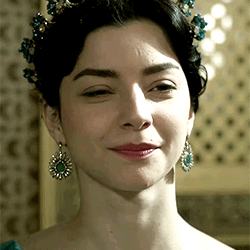
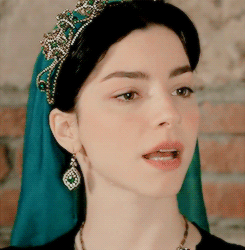
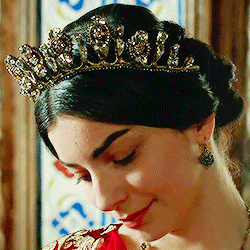
Daughter of Nicolo Venier and Violanta Baffo
Haseki Sultan (Legal Wife) of Sultan Selim II and Valide Sultan of Sultan Murad III
Mother of Sultan Murad III, Sah Sultan, Ismihan Sultan, Gevherhan Sultan, and Fatma Sultan
Grandmother of Sultan Mehmed III, Sehzade Mahmud, Sehzade Mustafa, Sehzade Oman, Sehzade Bayezid, Sehzade Selim, Sehzade Cihangir, Sehzade Abdullah, Sehzade Ahmed, Sehzade Yakub, Sehzade Alemsah, Sehzade Yusuf, Sehzade Hüseyin, Sehzade Korkud, Sehzade Ali, Sehzade Ishak, Sehzade Alaeddin, Sehzade Davud, Sehzade Suleiman, Sehzade Yahya, Hümasah Sultan, Ayse Sultan, Fatma Sultan, Mihrimah Sultan, Rukiye Sultan, Mihriban Sultan, and Fahriye Sultan.
Mother-in-law of Çakırcıbaşı Hasan Pasha, Zal Mahmud Pasha, Sokullu Mehmed Pasha, Kalaylıkoz Ali Pasha, Safiye Sultan, Piyale Pasha, Cerrah Mehmed Pasha, and Kanijeli Siyavuş Pasha
Fun Fact For Newbies: Nurbanu Sultan was born Cecilia Venier-Baffo
43 notes
·
View notes
Note
ACOB:
If you’re still looking for historical counterparts for the couples, I had one (based off the idea that Qoren and Rhaenyra eventually reconcile): Sultan Murad and Haseki (and eventual Valide) Safiye Sultan
Murad and Safiye were very much in love and had multiple children together. He was solely devoted to her and they were in a monogamous relationship for well over a decade (I believe it was for 20 years, might have to double check the exact length) until his sister gave him a gift of two concubines and then that sort of opened the flood gate where he kinda low key became a bit of a sex addict. However he and Safiye (despite her unhappiness at being replaced in his affections and his bed) stayed on relatively good terms and later on when he was getting too old for that kind of stuff, she and him reconciled and fell in love again and she was his only companion until he died just like when they were younger.
One of my favorite quotes:
“According to Venetian reports, Safiye maintained her dignity and status by evincing no jealousy of Murad’s concubines, although it was with bitterness that she initially tolerated her displacement. Turning adverse circumstances to political advantage, she even procured beautiful slaves for the sultan’s pleasure, an effort that earned his gratitude. Murad continued to esteem his first concubine, consulting her on political matters, especially after the death in 1583 of his mother Nurbanu Sultan, on whom he had relied greatly. Giovanni Moro reported in 1590 that “with the authority she enjoys as mother of the prince, she intervenes on occasion in affairs of state, although she is much respected in this, and is listened to by His Majesty, who considers her sensible and wise.” In later years when Murad no longer occupied himself with other concubines, Safiye again became the sultan’s sole companion, and enjoyed great honor and reputation” - The Imperial Harem by Leslie Pierce
Oh my gosh! Thank you for this I tried searching for a couple to base them off of and couldn't find anyone. You are literally a lifesaver!
1 note
·
View note